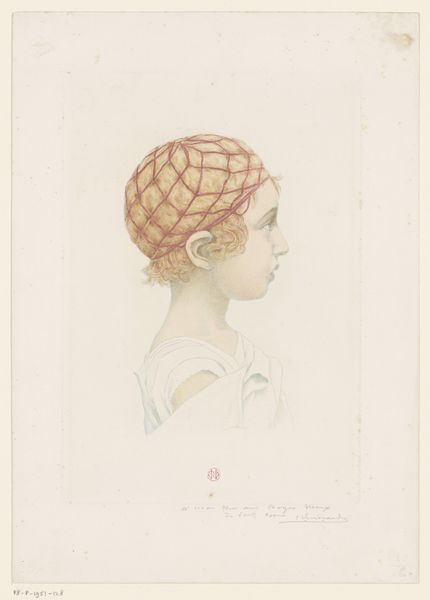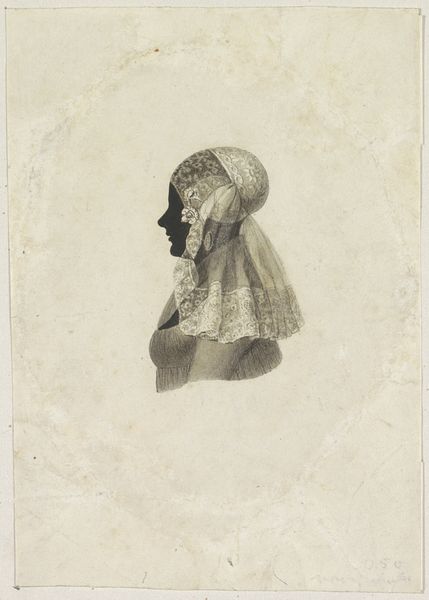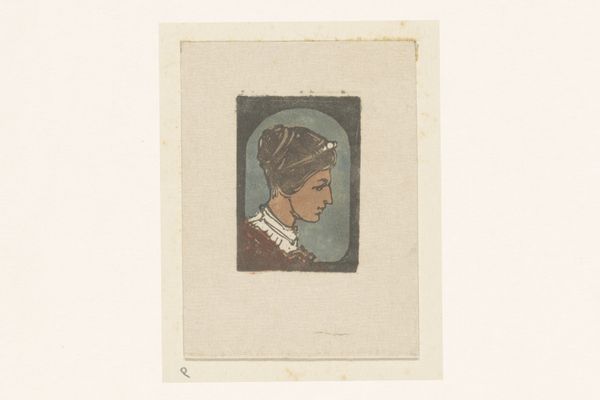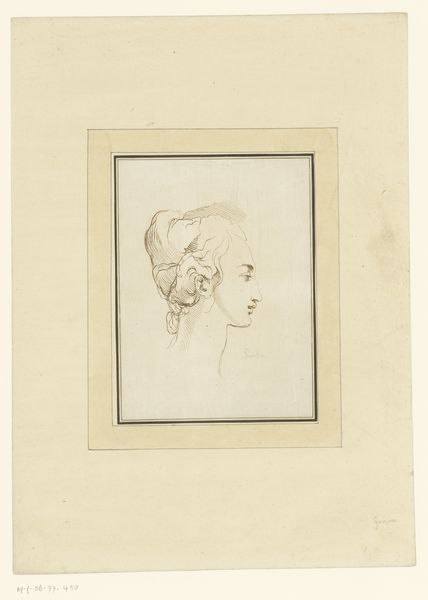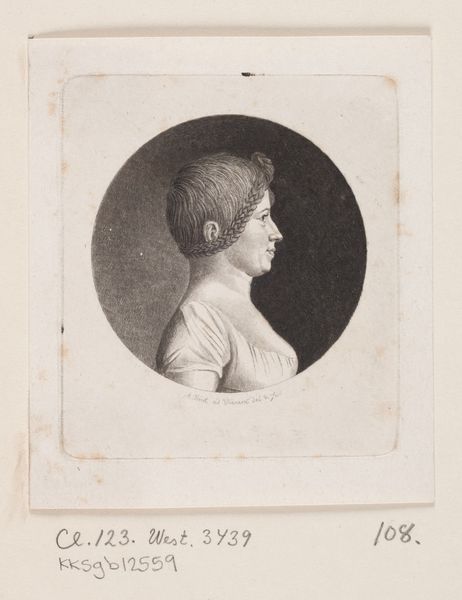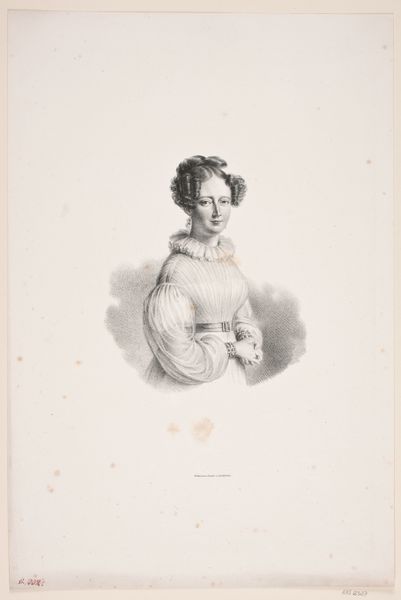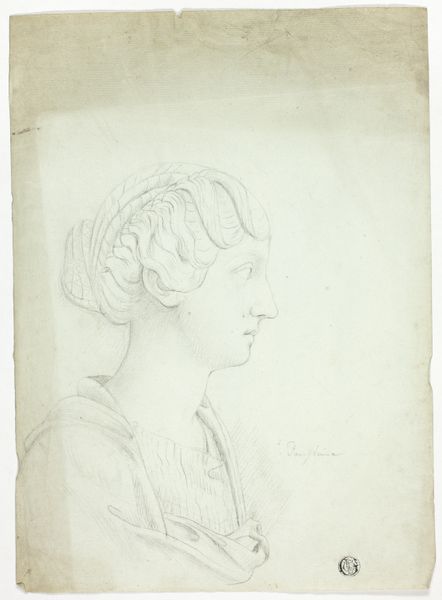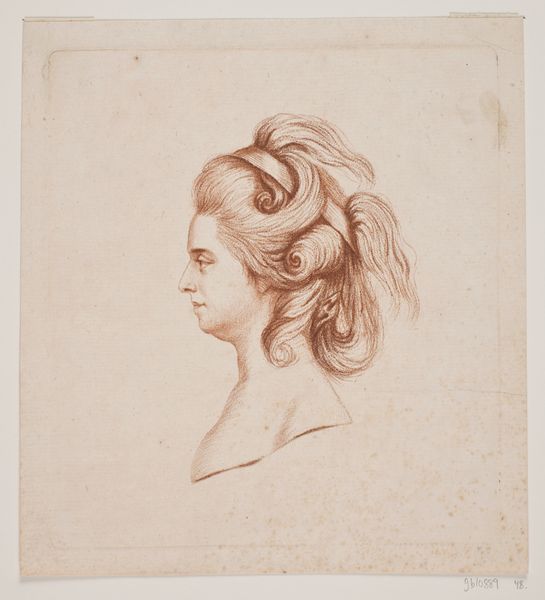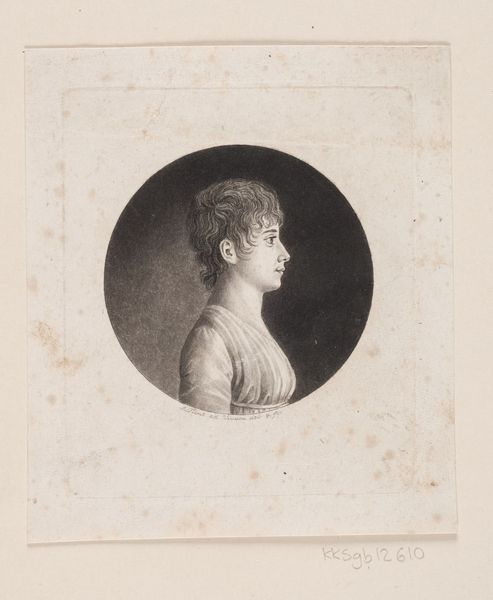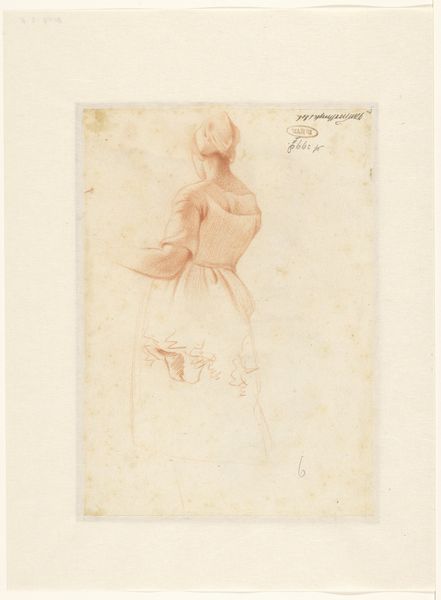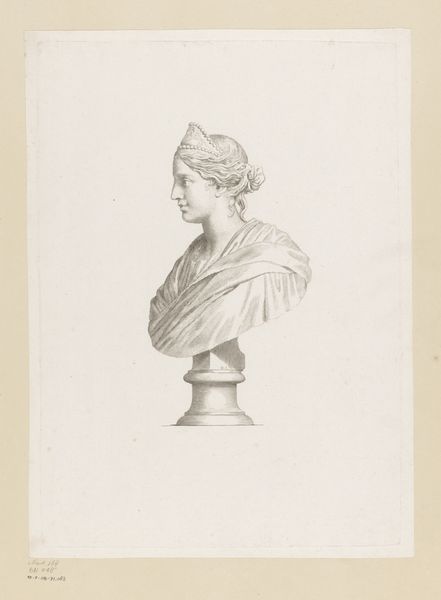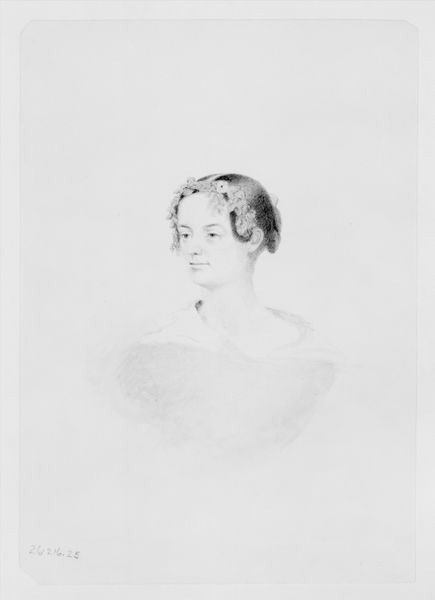
print, watercolor
#
portrait
#
water colours
# print
#
impressionism
#
watercolor
#
france
#
academic-art
#
watercolor
Dimensions: 6 1/2 x 3 3/4 in. (16.51 x 9.53 cm) (plate)12 3/8 x 8 7/8 in. (31.43 x 22.54 cm) (sheet)
Copyright: Public Domain
Curator: Let’s spend a moment with Henri-Charles Guérard's "Portrait of Jean Raimond Guérard," dating from around 1890. It is currently held at the Minneapolis Institute of Art. It’s primarily a print in watercolor over graphite. Editor: Ethereal! It's mostly light, but the netting on the hair... It feels fragile. Like she's caught in something. Curator: The impressionistic rendering indeed emphasizes the delicate interplay of light. Given that Guérard was working during the late 19th century in France, you see an interesting commingling of Academic and Impressionistic styles, reflecting the art market of the time that favored realism blended with modern styles. I am fascinated with how he manages to bring the traditions of portraiture to the new watercolor. Editor: I see the academic aspect in the careful modeling of the face, but there's also something almost wistful. It’s interesting, she seems to almost disappear, a kind of beautiful ghost, because the watercolor and light ground seem almost porous, insubstantial. Curator: The choice of watercolor emphasizes that "dissolving" effect you note, making one consider not only the final piece, but the performative gesture that yields a composition dependent on washes of material. How might this inform portraiture as labor? Editor: And her expression--a kind of innocent repose or melancholy, it’s unclear--seems somehow enhanced by the lightness of touch with the watercolour that evokes the era of social uncertainty, the shifting norms that affected every strata, I should think. Curator: Precisely, it creates this intimate space to analyze production value--art historically as much as materially. We're drawn to question if that porous effect evokes or attempts to deflect certain social anxieties. The portrait is caught, like its subject, in a net of artistic movements, anxieties, marketability, materiality, and meaning-making. Editor: Well, regardless of the material and economic imperatives driving its making, I find I can enter her silence. What a tender paradox! Curator: Indeed! It all comes together to invite deeper questions about the intersection of production, context, and meaning within portraiture of this period.
Comments
No comments
Be the first to comment and join the conversation on the ultimate creative platform.
